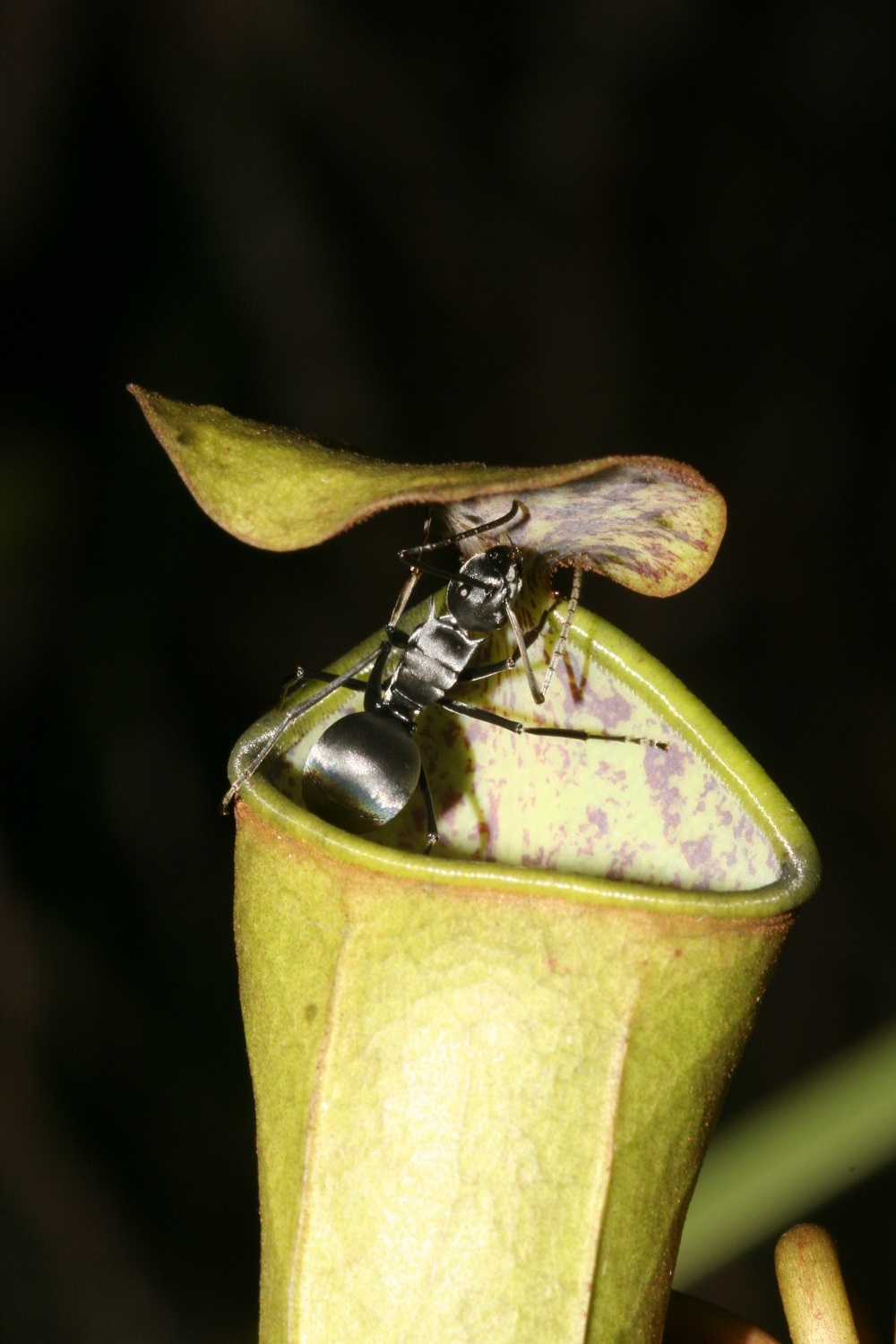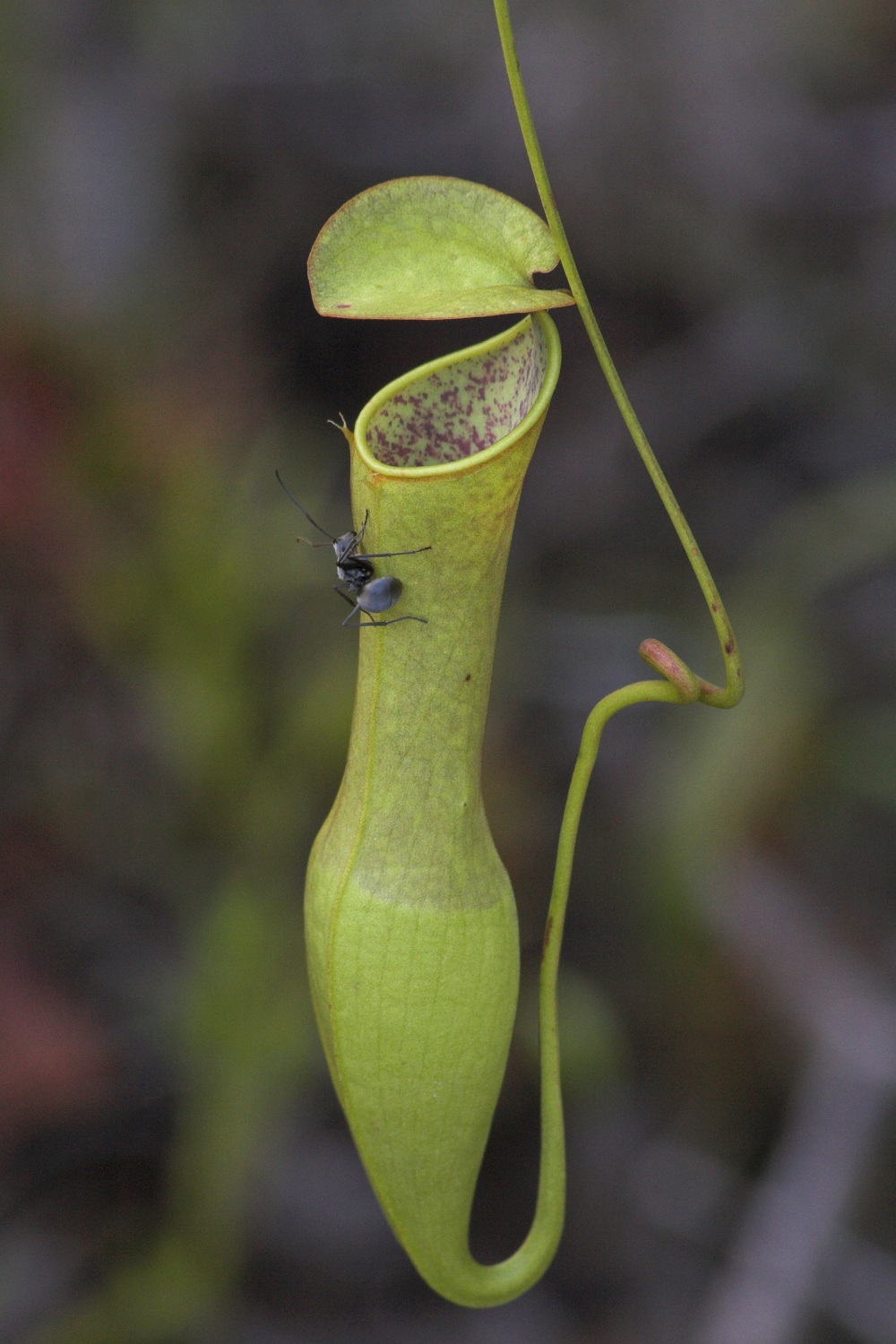Carnivorous Plant's Rain-Powered Catapult Flips Ants for Food

One species of ant-eating carnivorous plant has a special trick up its sleeve, new research has discovered.
The type of carnivorous plant, the pitcher plant of the species Nepenthes gracilis, lines the underside of its lid with aspecial waxy coating, which makes sure ants and flies will lose their grip when a raindrop falls and shakes the lid they are clutching. (The ants and flies walk upside-down on the underside of this lid.) The plant gets its name from its pitcher, the large empty structure that holds the digestive enzymes that churn up its fly meals and is covered by the waxy lid.
"Basically it works a bit like a springboard in a pool, but the other way around," study researcher Ulrike Bauer, of the University of Cambridge in the United Kingdom, told LiveScience. "The reason why it works is it has a specialized waxy coating on the lower lip surface."
Flipping its lid
By replacing this waxy surface with a smooth one in the lab, the researchers were able to show that this covering is specially created by the plant to have just enough grip for the ants to hang on to normally, but when hit with a raindrop or other vibration-producing stimulus, the ants are no longer able to grip and fall straight into the pitcher.

The ants and flies are attracted to the bottom of the lid because the plants excrete a sugary nectar from the lid. It is also a good place to hide during a rainstorm, especially if the bug has delicate wings, Bauer said. Instead these bugs "end up in the pitcher fluid instead of finding a safe and dry place." [Image Gallery: Wacky Carnivorous Plants]
Using medium-size lab-created raindrops, the researchers were able to knock about 40 percent of the ants off the lid and into the pitcher. The researchers also took high-speed video of the movements.
Sign up for the Live Science daily newsletter now
Get the world’s most fascinating discoveries delivered straight to your inbox.
"The raindrops hit the pitcher lid from above and that makes the lid move quickly downward and that's where we think the insects then get flicked off," Bauer said.
Wax on, wax off
The researchers also took a closer look at the waxy surface on the underside of the lid using scanning electron microscopy.
"If you look at a high magnification under a microscope, you can see it's a structure made up of wax pillars situated very close together," Bauer said. "What that does is it makes the surface slightly slippery, but not completely slippery. It's safe enough for the insect to walk upside-down under normal conditions, but not when the lid is hit by a raindrop — it starts to vibrate and that's enough for the insect to fall off."
This is the first example of the lid being used to trap bugs. Typically, the lid usually serves to keep rain out of the plant's pitcher.
The study is detailed today, June 13, in the journal PLoS ONE.
Follow Jennifer Welsh on Twitter @microbelover or LiveScience @livescience. We're also on Facebook & Google+.
Jennifer Welsh is a Connecticut-based science writer and editor and a regular contributor to Live Science. She also has several years of bench work in cancer research and anti-viral drug discovery under her belt. She has previously written for Science News, VerywellHealth, The Scientist, Discover Magazine, WIRED Science, and Business Insider.











